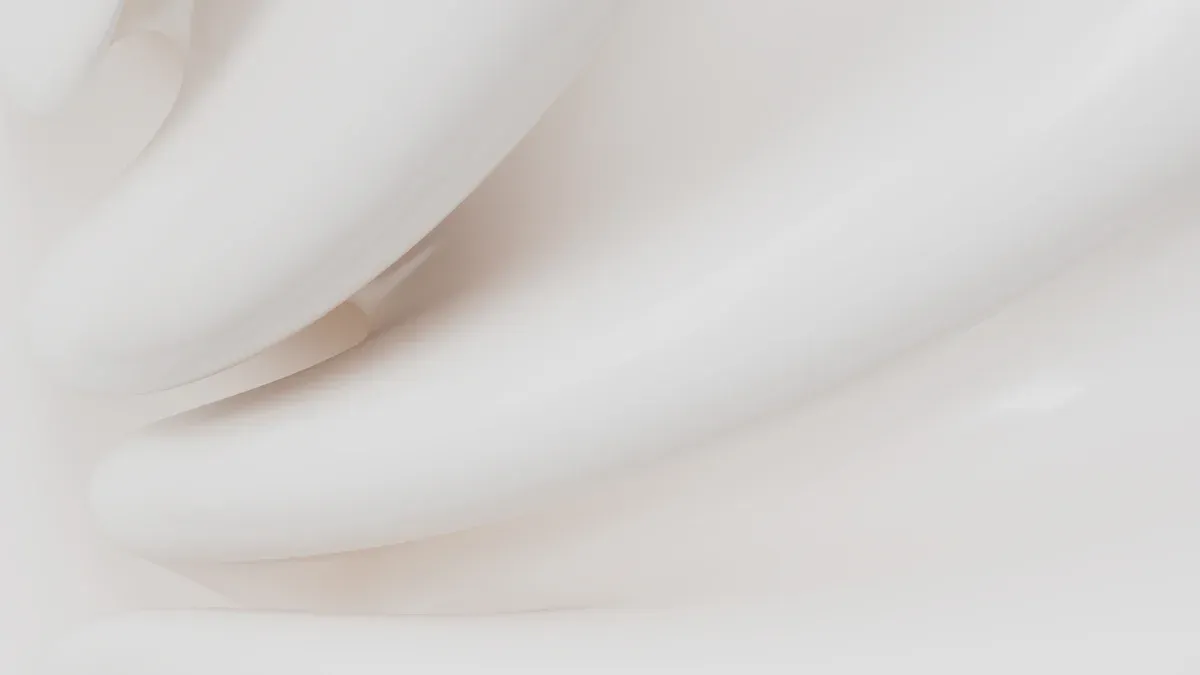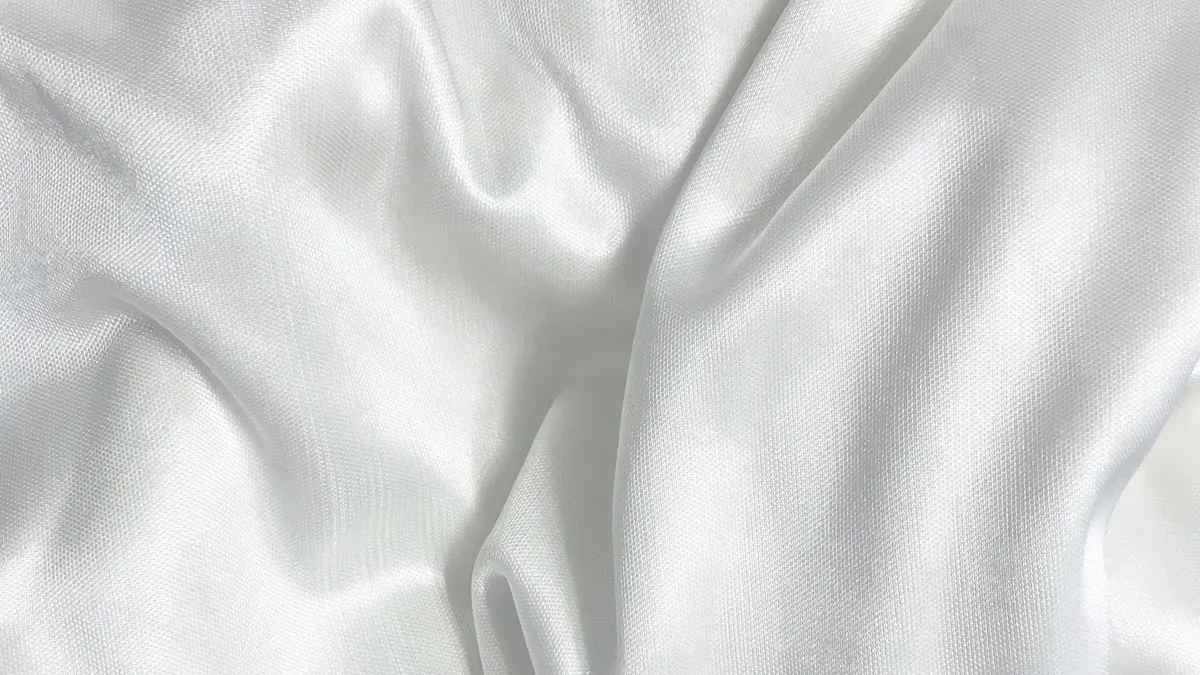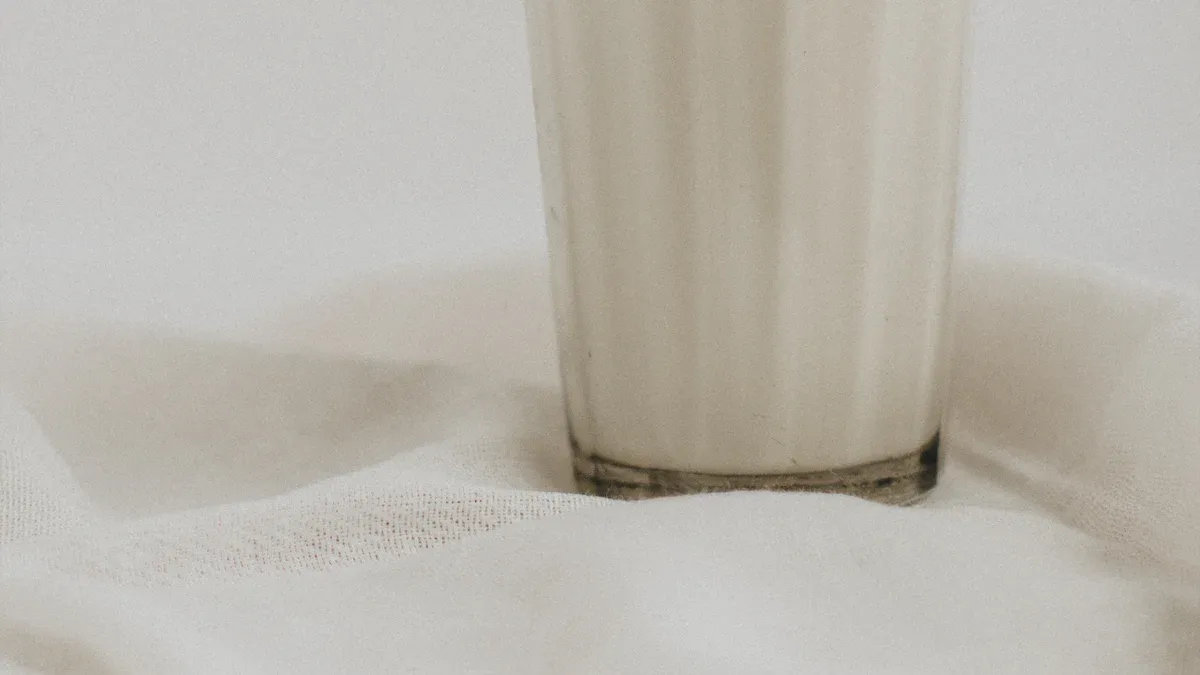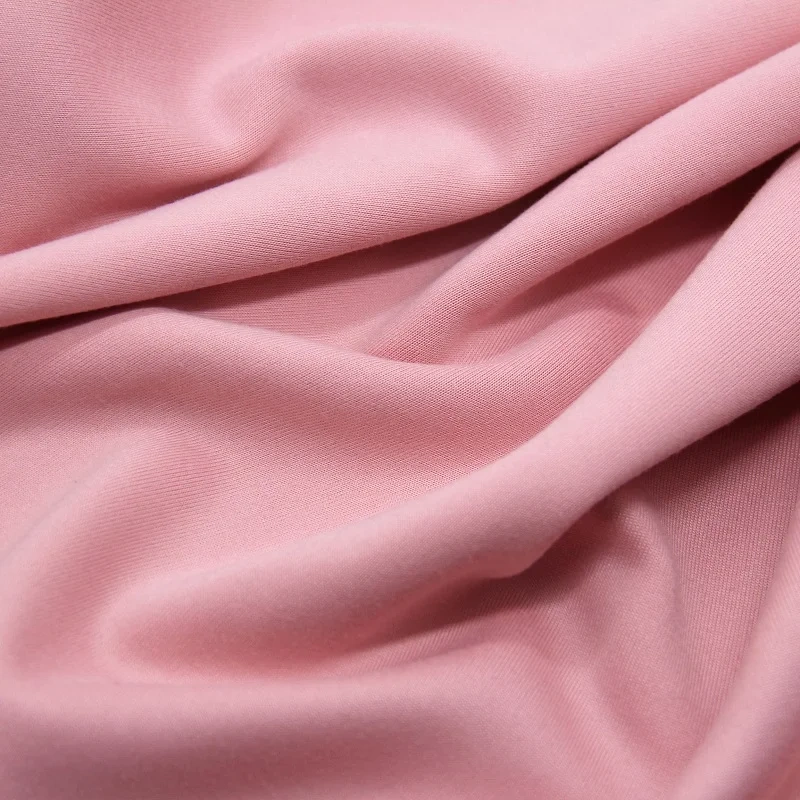
If you wonder what is milk silk fabric, you can think of it as a soft, eco-friendly textile made from milk protein, also called casein. This innovative fabric stands out for its silky touch and breathability, making it a favorite for people who value comfort and sustainability.
Despite its premium feel, milk silk fabric represents only a tiny part of the global textile market in 2024. You might notice top brands like Friendtex use milk silk fabric to create high-quality, luxurious clothing that feels gentle on your skin and supports a greener future.
Key Takeaways
Milk silk fabric is made from milk protein called casein, blended with materials like spandex for softness, stretch, and durability.
This fabric feels silky, breathable, and gentle on the skin, making it ideal for loungewear, sleepwear, and active clothing.
Milk silk fabric supports sustainability by using leftover milk, reducing waste, and avoiding harsh chemicals in production.
Different types of milk silk fabric suit various needs, from pure silk-like luxury to stretchy blends for everyday wear.
Choosing certified suppliers like Friendtex ensures you get high-quality, eco-friendly milk silk fabric that lasts and feels great.
What is Milk Silk Fabric?

When you ask what is milk silk fabric, you discover a textile that combines science and sustainability. This fabric starts with milk protein, known as casein, which comes from real milk. Manufacturers extract casein from milk, then process it into a soft, smooth fiber.
The result is a fabric that feels luxurious and gentle on your skin. Many people choose milk silk fabric because it offers comfort, breathability, and a touch of innovation to their wardrobe.
Properties of Milk Silk Fabric
You will notice several unique qualities when you touch milk silk fabric. The first thing you feel is its silky softness, which rivals even natural silk. Many people say it feels smoother than cotton and much softer than polyester. This makes it a favorite for loungewear, sleepwear, and clothing that sits close to your skin.
Milk fiber also stands out for its breathability. It allows air to flow, helping your skin stay cool and dry. While it is not as breathable as pure cotton, it still offers good moisture-wicking and temperature regulation. This means you stay comfortable, whether you wear it during the day or at night.
Another important property is stretch. Thanks to the blend with spandex or polyester, milk silk fabric moves with you. It resists wrinkles and keeps its shape, even after many washes. You get a fabric that looks fresh and feels great every time you wear it.
Milk fiber is also eco-friendly. The production process often uses leftover milk that would otherwise go to waste. This reduces environmental impact and supports a more sustainable textile industry. Modern methods avoid harsh chemicals, making the fabric safer for you and better for the planet.
Friendtex leads the way in using advanced technology and sustainable practices. Their commitment to quality ensures that every piece of milk silk fabric meets high standards. When you choose Friendtex, you support innovation and responsible fashion.
What is Milk Silk Fabric Made Of?

When you look at milk silk fabric, you might wonder what gives it that soft, smooth feel. The answer lies in its main ingredient: milk fiber. This unique fiber comes from the protein found in real milk, called casein. Factories use leftover or surplus milk to create casein, which helps reduce waste and supports eco-friendly production.
You will find that milk fiber forms the base of this fabric. To make it even better for clothing, manufacturers often blend it with other materials. The most common blend includes about 80% milk fiber and 20% spandex or polyester. This mix gives you a fabric that stretches, holds its shape, and feels gentle on your skin.
Here’s a simple breakdown of what goes into milk silk fabric:
Milk fiber: The main ingredient, made from milk protein (casein).
Spandex or polyester: Added for stretch, durability, and flexibility.
Water and mild chemicals: Used during the process to turn casein into usable fibers.
Tip: When you choose products made with milk fiber, you support a more sustainable textile industry. This fiber uses resources that might otherwise go to waste.
You might notice that milk fiber feels similar to natural silk. It offers a silky touch, breathability, and moisture-wicking properties. These qualities make it perfect for loungewear, pajamas, and even children’s clothing. If you want a fabric that combines comfort, innovation, and sustainability, milk fiber is a smart choice.
A quick table can help you see the main components:
Component | Purpose |
|---|---|
Milk fiber | Softness, eco-friendliness |
Spandex/Polyester | Stretch, durability |
Water/Chemicals | Fiber processing |
How is Milk Silk Fabric Made?
Process
You might find it fascinating how milk silk fabric transforms from simple milk into a luxurious textile. The process uses leftover milk from dairy production, which helps reduce waste and supports sustainability. Here’s how manufacturers turn milk into soft, wearable fabric:
Casein Extraction: Factories start by separating casein protein from surplus milk.
Purification: They purify the casein to remove any impurities.
Dissolving and Spinning: The purified casein dissolves in a special solution, then gets spun into fine fibers using advanced machinery.
Strengthening and Stretching: These fibers go through treatments to boost their strength and elasticity.
Weaving or Knitting: The finished fibers are woven or knitted into fabric, ready for use in clothing.
Finishing Touches: The fabric may receive extra treatments for softness, sheen, or color.
This process differs from traditional silk-making, which relies on silkworms and cocoons. Milk silk uses modern technology to create a fabric that feels just as smooth and gentle.
Tip: Choosing milk silk means you support a process that uses resources wisely and values innovation.
Friendtex Manufacturing
When you choose Friendtex, you get more than just beautiful fabric. Friendtex uses advanced technology to make sure every step of production meets high standards for quality and sustainability.
The company uses leftover milk, modern spinning machines, and eco-friendly treatments to create milk silk fabric that feels soft and lasts long.
Friendtex also holds several important certifications that show its commitment to safe and ethical manufacturing:
GOTS (Global Organic Textile Standard)
OEKO-TEX® (especially for children’s sleepwear)
SEDEX
BSCl
WARP
These certifications mean you can trust Friendtex to deliver milk silk fabric that is safe for your skin, gentle on the planet, and perfect for premium clothing lines.
Types of Milk Silk Fabric
When you explore milk silk fabric, you will find several types that suit different needs. Each type offers unique qualities, so you can choose the best one for your project or wardrobe.
1. Pure Milk Silk Fabric
This type uses almost 100% milk fiber. You get a fabric that feels extremely soft and smooth. Pure milk silk works well for luxury items, such as scarves or high-end sleepwear. You will notice its natural sheen and gentle touch on your skin.
2. Blended Milk Silk Fabric
Most milk silk fabrics you see today are blends. Manufacturers often mix milk fiber with spandex or polyester. This blend gives you extra stretch, durability, and wrinkle resistance. You might find blends like 80% milk fiber and 20% spandex. These fabrics work great for activewear, loungewear, and everyday clothing.
3. Knitted Milk Silk Fabric
Knitted milk silk feels stretchy and flexible. You will enjoy this type for T-shirts, pajamas, and children’s wear. The knit structure allows the fabric to move with you, making it perfect for comfortable, close-fitting clothes.
4. Woven Milk Silk Fabric
Woven milk silk has a tighter structure. You get a fabric that feels smooth and holds its shape well. This type works best for dresses, blouses, or items that need a bit more structure.
Tip: If you want a fabric that feels soft and stretches, look for a milk silk blend with spandex. For a more classic, silky feel, try pure or woven milk silk.
Here’s a quick comparison to help you decide:
Type | Best For | Key Features |
|---|---|---|
Pure Milk Silk | Luxury items | Ultra-soft, natural sheen |
Blended Milk Silk | Everyday wear, sports | Stretchy, durable |
Knitted Milk Silk | Pajamas, T-shirts | Flexible, breathable |
Woven Milk Silk | Dresses, blouses | Smooth, holds shape |
You can match the type of milk silk fabric to your needs. Friendtex offers a wide range of options, so you always find the right fabric for your brand or personal style.
Is Milk Silk Fabric Stretchy?
When you pick up a piece of milk silk fabric, you might wonder how much it can stretch. The answer depends on the blend. Most milk silk fabrics combine milk protein fibers with elastic materials like spandex. This combination gives you a fabric that feels soft and flexible at the same time.
You will notice that milk silk stretch fabric moves with your body. It holds its shape well, even after you pull or wear it many times. This makes it a great choice for clothing that needs to fit closely or allow for movement.
You often see milk silk fabric in items like leggings, sportswear, and lingerie. These garments need to stretch and recover quickly, so you stay comfortable all day.
Here are some key points about the stretchiness of milk silk fabric:
Blending milk silk with spandex creates a fabric that stretches easily and snaps back to its original shape.
The fabric feels smooth against your skin, so you get both comfort and flexibility.
Milk silk stretch fabric works well for form-fitting clothes, such as activewear and underwear.
You will not find a direct comparison between milk silk and other stretch fabrics like polyester or nylon, but the comfort and recovery are excellent.
Tip: If you want clothes that move with you and keep their shape, look for milk silk blends with spandex. These fabrics offer a balance of softness and stretch that many people love.
You can trust that milk silk stretch fabric will keep up with your active lifestyle. Whether you wear it for lounging, working out, or daily activities, you get a fabric that feels good and fits well. If you value comfort and flexibility, milk silk fabric is a smart choice for your wardrobe.
Applications of Milk Silk Fabric
You will find milk silk fabric in many types of clothing. This fabric works well for loungewear, sleepwear, lingerie, and kids’ wear. You might notice how soft and smooth it feels against your skin. Many people choose it for pajamas and robes because it keeps them comfortable all night.
You can also find it in T-shirts, dresses, and even baby clothes. Friendtex offers a wide range of products made from milk silk fabric. Their collection includes women’s and men’s pajamas, underwear, and children’s wear. You can select from different styles and colors to match your brand or personal taste.
You may wonder how milk silk fabric compares to milk cotton fabric. Both fabrics use innovative processes, but they have some differences. Milk silk fabric comes from milk protein, while milk cotton fabric blends milk fiber with cotton. This blend gives milk cotton fabric a unique texture.
You will notice that milk cotton fabric feels a bit more like traditional cotton, but with added softness from the milk fiber. Many brands use milk cotton fabric for T-shirts, casual wear, and children’s clothing. It offers breathability and a gentle touch, making it great for sensitive skin.
If you want a fabric that stretches and feels silky, milk silk fabric is a good choice. For a fabric that feels more like classic cotton but with extra softness, you might prefer milk cotton fabric.
You can use milk cotton fabric for everyday wear, while milk silk fabric works best for items that need a smooth, luxurious finish. Friendtex can help you choose the right fabric for your needs. Their team understands the strengths of both milk silk fabric and milk cotton fabric.
Tip: When you select between milk silk fabric and milk cotton fabric, think about the feel you want and how you plan to use the garment. Each fabric brings something special to your wardrobe or product line.
Milk Silk vs Other Fabrics
Milk Silk Fabric vs Cotton
When you compare milk silk fabric to cotton, you notice some clear differences. Milk silk feels smoother and silkier against your skin. Cotton gives you a classic, soft touch, but milk silk often feels even more luxurious.
Both fabrics breathe well, but milk silk stands out for its gentle sheen and moisture-wicking ability. You might find milk silk fabric dries faster and keeps you cooler during warm nights.
In terms of sustainability, both fabrics offer eco-friendly options. Milk silk uses leftover milk, which helps reduce waste. Cotton, especially organic cotton, also supports green practices. If you want a fabric that feels like silk but comes from a renewable source, milk silk is a smart choice.
Many people also compare milk silk fabric to milk cotton fabric. Milk cotton fabric blends milk fiber with cotton, giving you a unique texture that combines the best of both worlds. You get the softness of milk silk and the breathability of cotton in milk cotton fabric.
Milk Silk Fabric vs Polyester
Polyester is a popular synthetic fabric, but it feels different from milk silk. When you touch polyester, you might notice it feels less soft and less natural. Milk silk fabric offers a silky, breathable feel that keeps your skin comfortable. Here’s a quick comparison:
Feature | Milk Silk Fabric | Polyester |
|---|---|---|
Feel | Silky, smooth, natural | Smooth, less natural |
Breathability | Highly breathable | Less breathable |
Moisture-wicking | Excellent, keeps skin dry | Lower, can trap sweat |
Durability | Good, especially in blends | Very high |
Sustainability | Eco-friendly, uses waste milk | Synthetic, less green |
Milk silk fabric lets your skin breathe and absorbs sweat, so you stay dry and cool.
Polyester is strong and durable, but it does not manage moisture as well as milk silk.
If you want a fabric that feels gentle and keeps you comfortable, milk silk is a better pick.
You may also see milk cotton fabric used as an alternative to polyester blends. Milk cotton fabric gives you a softer, more natural feel than polyester.
Milk Silk Fabric vs Spandex
Spandex is famous for its stretch. You find it in sportswear and leggings. Milk silk fabric often blends with spandex to add flexibility. On its own, spandex does not feel soft or breathable. When you combine it with milk silk, you get a fabric that stretches and feels smooth at the same time.
Milk silk fabric with spandex moves with you and keeps its shape.
Spandex alone is stretchy but lacks comfort and breathability.
Milk cotton fabric sometimes includes spandex for extra stretch, giving you a soft, flexible option for activewear.
Friendtex can customize milk silk blends to fit your needs. You can choose regular or custom colors, and you can request special features by contacting their team. This flexibility helps you create the perfect fabric for your brand, whether you want pure milk silk, milk cotton fabric, or a unique blend.
Cost and Sourcing
Price Factors
When you look at the price of milk silk fabric, you see several things that affect what you pay. The cost of raw materials can change quickly. If the price of milk or other ingredients goes up, the fabric becomes more expensive.
You also notice that competition from other fabrics, such as modal, Tencel, and bamboo, can push prices down or up. Factories must follow strict environmental rules, which can add to their costs. New technology in fabric making sometimes lowers costs, but it can also raise the value of the final product.
Demand for sustainable and comfortable clothing keeps growing, which can make prices rise. Where the fabric is made also matters. For example, China’s strong manufacturing base often means lower prices for buyers.
Here is a table to help you see the main price factors:
Factor | Explanation |
|---|---|
Raw Material Cost Fluctuations | Changes in milk and other inputs affect production costs. |
Competition | Other sustainable fabrics create pricing pressure. |
Environmental Regulations | Stricter laws increase operational expenses. |
Technological Advancements | New methods can change both cost and product value. |
Consumer Demand | More people want sustainable fabrics, which can drive up prices. |
Regional Production Dynamics | Manufacturing hubs like China offer cost advantages. |
Where to Buy Milk Silk Fabric?
You can find milk silk fabric from many suppliers around the world. Online platforms like Alibaba list certified suppliers who offer a range of milk fiber fabrics. When you shop, always check for important certifications.
Look for labels such as Global Organic Textile Standard (GOTS), OEKO-TEX® (including STANDARD 100 and STeP), World Fair Trade Organisation (WFTO), and Global Recycle Standard (GRS).
These certifications show that the fabric meets high standards for safety, sustainability, and ethical production. Some suppliers also offer blends with recycled materials, giving you more eco-friendly options.
Tip: Always ask for certification documents before you buy. This helps you make sure you get genuine, sustainable milk silk fabric.
Friendtex as a Supplier
If you want a trusted source for premium milk silk fabric, Friendtex stands out. You get access to a wide range of high-quality fabrics, all produced with strict attention to sustainability and safety. Friendtex holds certifications like GOTS, OEKO-TEX®, SEDEX, and GRS.
The company uses advanced technology and eco-friendly processes to deliver fabrics that meet the needs of high-end brands. You can also customize your order, choosing blends, colors, and styles that fit your vision. Friendtex supports you from design to delivery, making it easy to create unique, sustainable products for your brand.
Choosing Friendtex means you partner with a supplier who values quality, innovation, and the environment as much as you do.
Conclusion
Milk silk fabric gives you a unique blend of softness, breathability, and eco-friendly appeal. You see it used in luxury loungewear, sportswear, and even smart textiles. Recent innovations make milk silk more functional and sustainable, with improved moisture-wicking and wrinkle resistance.
You benefit from a fabric that feels gentle and supports a greener future.
Friendtex offers premium, certified milk silk fabric for brands that value quality and innovation.
Explore new textile options and choose materials that match your values and comfort needs.
FAQ
What makes milk silk fabric eco-friendly?
You support sustainability when you choose milk silk fabric. Manufacturers use leftover milk to create the fibers. This process reduces waste and saves resources. You help the planet by picking a fabric that values recycling and smart production.
Can you machine wash milk silk fabric?
You can machine wash most milk silk fabrics on a gentle cycle. Use cold water and mild detergent. Avoid bleach and high heat. Always check the care label for best results.
Is milk silk fabric safe for sensitive skin?
Yes, milk silk fabric feels soft and gentle. You can wear it if you have sensitive skin. The smooth fibers help prevent irritation. Many people choose it for baby clothes and underwear.
Does milk silk fabric wrinkle easily?
Milk silk fabric resists wrinkles, especially when blended with spandex or polyester. You spend less time ironing. Your clothes look fresh and smooth throughout the day.


